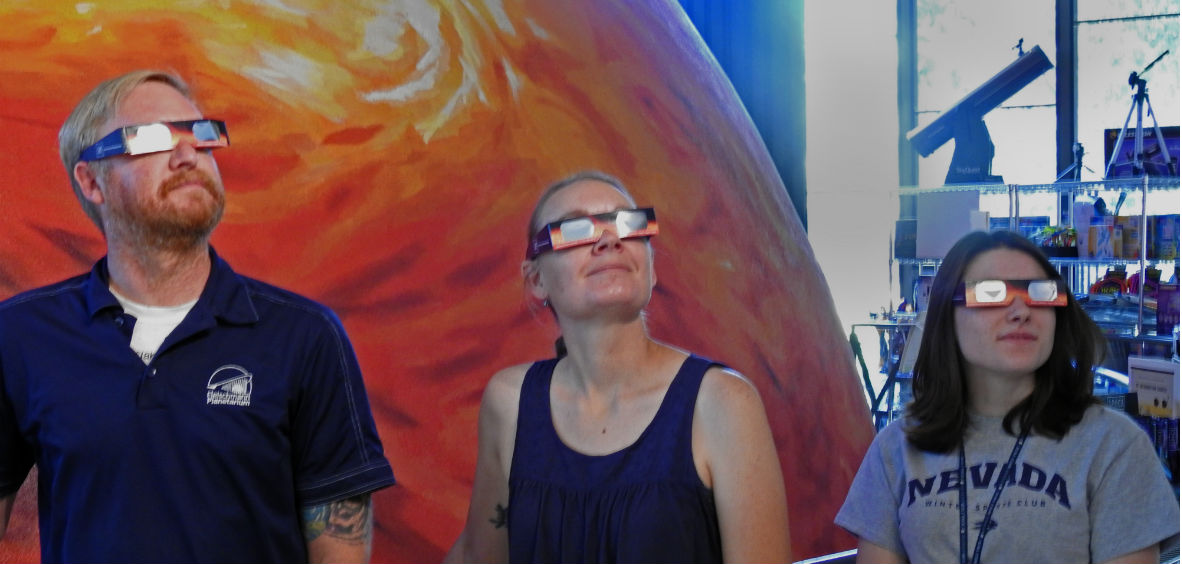When some people hear that 83 percent of the sun will be blocked, they might assume it's just another day in January. However, when 83 percent of the sun is blocked in the middle of August, people will notice. During the late morning hours (9:04-11:43 a.m.) of Aug. 21, 2017, residents in Reno, along with the rest of North America, will be in the path of a solar eclipse, an astrological event where the moon passes between the sun and the Earth, blocking Earth's view of the sun.
This is a rare event, with the last total solar eclipse in North America took place in 1979, during the Carter administration, and the next total eclipse expected to come in 2024.
While Reno will not be in the 70-mile-wide path stretching from Oregon to South Carolina where the sun is completely blocked, Reno is expected to see more than four-fifths, 83 percent to be exact, of the sun blocked. This means that you don't need to travel to get some moon shade.
At this point, Director of the University of Nevada, Reno's Fleischmann Planetarium and Science Center Dan Ruby would advise against traveling. In an email, he said people who haven't already booked hotel rooms and planned ahead of the solar eclipse shouldn't travel to see the full eclipse in that 70-mile ribbon because the crowds are expected to overrun the communities and stress their resources.
David Bennum, a physics professor with the University's College of Science, cites the increased amount of travel during this time as another piece of proof of the social nature of the solar eclipse. "Most of the people who are traveling are not scientific people," he said. "It's a great social event, it's a dramatic event."
{{RelatedPrograms}}
While Bennum's teaching duties won't allow him to travel to see the total eclipse, Ruby is planning on traveling to Oregon to view and study the eclipse. He is planning on taking pictures, filming videos, and posting to various social media channels of the University and the Fleischmann Planetarium.
Ruby said the solar eclipse is a useful scientific tool because it allows for the study of the corona, the outer ring of the sun since the rest of the sun is so bright that the corona cannot be seen. Even though, Bennum said, modern technology, like solar telescopes, can allow for the corona to be seen anytime.
The morning hours prove to be an added bonus for the solar eclipse since it allows for student's class time to be devoted to observation, something both Ruby and Bennum are excited about. As a part of the eclipse celebration, the University 's planetarium has teamed with the Washoe County School District to give all students in the district a pair of safe solar viewers.
A major precaution and a minor investment for people who want to view the solar eclipse is to obtain a pair of viewers specifically designed to look at the solar eclipse. Going without visors, or even standard sunglasses, would cause significant damage to the eyes. Fleischmann Planetarium is offering specially designed eclipse glasses with the University and Fleischmann Planetarium logos on it for $2 each, and plain white viewers with no logos or designs for $1 each, when bought in bulk, 25 or more, for educational and non-profit purposes. Ruby cautioned against buying viewers online, as it is hard to verify the viewers are certified and suitable for safe solar viewing.
"The importance of eye protection cannot be stressed enough," he said, equating the sun to a giant nuclear reactor in space. Even 15 percent of the sun, which will be viewable in Reno at its peak coverage, is enough to cause permanent eye damage. When asked for any last comments on the solar eclipse, Bennum also cited the need for eye protection. Aside from glasses, he also noted that solar telescopes, like the ones the University has has, can block out more than 99.9 percent of the sun.
In the Fleischmann Planetarium Dome Theatre is a special show about solar eclipses that will be shown daily at 1 p.m., 3 p.m. and 5 p.m. with an additional 7 p.m. show on Mondays through Saturdays in August.












